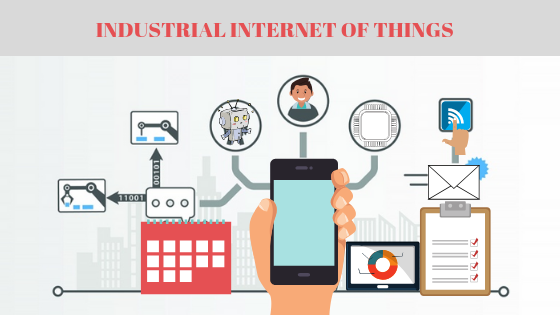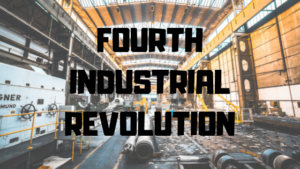In this article, you will be able to understand about the Internet of things and how it will impact our current manufacturing processes. Internet of things(IoT) has become a buzzword in recent times. It would be interesting to understand why it is becoming popular in manufacturing these days.
Table of Contents
What is IoT?
To date, the internet has been all about people like photo sharing, data recording, communication, etc. We can say the internet till recent time has been by people, for people, and about people.
When the internet first came into being, it changed the world. Now a new form of internet is poised to change the world again. It is called the Internet of things.
Internet of things in interaction or interconnectivity of physical machines or devices through the internet, to create technology-driven systems and processes.
Through IoT, various devices or machines communicate with each other and can be monitored from remote places. Multiple devices share data on the cloud and that data is clubbed and fed in a useful form.
So this new internet (Internet of things) is not just about connecting people but about connecting things. Hence the name Internet of things(IoT).
The use of the internet of things in the manufacturing industry has led to a new term Industrial Internet of things(IIOT).
Why the Internet of things is a big deal?
We as human beings interact and collaborate with other people in our environment through our 5 senses(touch, hear, See, Smell and Taste).
Internet of things loads machines and devices with the ability to sense, communicate, touch and control. It makes machines and devices collaborate and communicate leading to a more optimized process.
Industrial internet of things will improve our factories in terms of monitoring, efficiency, and productivity.
The industrial internet of things (IIoT) market is predicted to reach $124B in 2021. This includes a CAGR of 7.3% through 2020. Morgan Stanley predicts the industrial IoT market size to reach $110 billion by 2020. According to Accenture, IIoT could add $14.2 trillion to the global economy by 2030.
Data analytics can give extremely helpful insights to improve industrial processes. Industrial Internet of things helps collect machine or device-specific data and feed it to the central nodal point. Which process it to give it a useful form.
Internet of things in conjunction with cloud technology and machine learning will disrupt the manufacturing industry forever.
Decentralization of decision making and centralization of monitoring has made it possible to scale operations at amazingly quick speeds.
It’s the network of a multitude of industrial devices connected by communications technologies that result in systems that can monitor, collect, exchange, analyze, and deliver valuable new insights like never before.
-GENERAL ELECTRIC
Industrial internet of things is an integral part of Industry 4.0.Industrial internet of things with change manufacturing in all aspects.I am listing down all those benefits one by one.
Smart Factory
IIOT is an integral part of making our factories smart factories. The Internet of things helps communicate operational information to management. It helps managers operate from remote locations.
In smart factories loss of production due to delays in communication or due to loss of information will be minimized. Know more about 7 types of industrial waste.
Since machines would work on real-time data, they would keep climbing the improvement curve. To put it in simple words, it would work in the autocorrect mode.
Increasingly sophisticated analytics and applications based on Artificial Intelligence and machine learning handle many of the routine tasks, freeing up people to focus on handling exceptions and making higher-level decisions. Robots are expected to populate smart factories for routine work, working alongside people.
Predictive Maintenance
Currently, in most of the manufacturing facilities, the preventive maintenance cycle is followed.
Preventive maintenance frequency might vary from machine to machine but the same frequency is followed for all machines as per current manufacturing practices.
Predictive maintenance would be based on real-time data collected and analyzed through machines with the help of the internet of things. All decision making to date has been through historical data, such decision making is not the most efficient form of decision making.
IIOT indeed helps make more optimized decisions based on real-time data and self-improving data.
Imagine you are able to prevent damage to the machine due to the overheating of any component machine spare part. It would be possible through the Internet of things(IoT).
Production Planning and Flow
“An Hour of planning can save you 10 Hours of doing”
-Dale Carnegie
If a manufacturing unit fails in proper production planning, impacts are severe and compounding. It reflects at each and every stage of the production chain.
Production planning and control are some of the core processes of manufacturing units. It aligns production shop, customers and suppliers towards a united goal.
IIOT will help find patterns through data collected. It will improve planning by adjusting planning according to identified patterns.
In today’s scenario, the Customer needs a change in quick tandem considering dependency on multiple factors. Real-time data collection and processing helps adjust quickly to change in customer needs.
Improved Quality Products
Good quality products are the primary requirement of any customer. Quality KPIs are the most discussed and concentrated KPIs in any organization.
With IoT sensors and machines which communicate with each other and the user, organizations can have a proactive approach to solving Quality Assurance challenges.
For example, AI and ML-enabled devices can track product quality using imaging. Their detection limits are amazing.
It helps production supervisors to stop production and rectify problems on an immediate basis. This reduces the risk size drastically.
Moreover, the health of manufacturing equipment contributes integrally to the quality of the product manufactured. IIOT enabled machines can capture any alteration in machine health very quickly and help rectify before it’s too late.
Efficient Energy Management
If you have a close look at Balance sheet manufacturing organization. Energy expense contributes a considerable proportion to the overall expense.
With IoT sensors tracking parameters of every individual device, it’s much easier to make the proper adjustments and boost performance at just the right time.
It makes Operation cycles of machines and devices more efficiently.
Conclusion
The loss of information, information bias, and unorganized data are the biggest drawbacks of the current manual data feeding system.
The Internet of Things(IoT) as a tool provides highly precise information about products, production plants, networks and systems on demand. With its incredible real-time capabilities, users have precise and unadulterated data for decision making. This indeed improves decision making at all strata of the organization.
IoT is here to stay. It is the doorway to more optimized and much quicker manufacturing processes.
References :
https://internetofthingsagenda.techtarget.com/definition/Internet-of-Things-IoT
https://en.wikipedia.org/wiki/Internet_of_things





Hi to all, how is everything, I think every one is getting more from this site,
and your views are fastidious for new people.